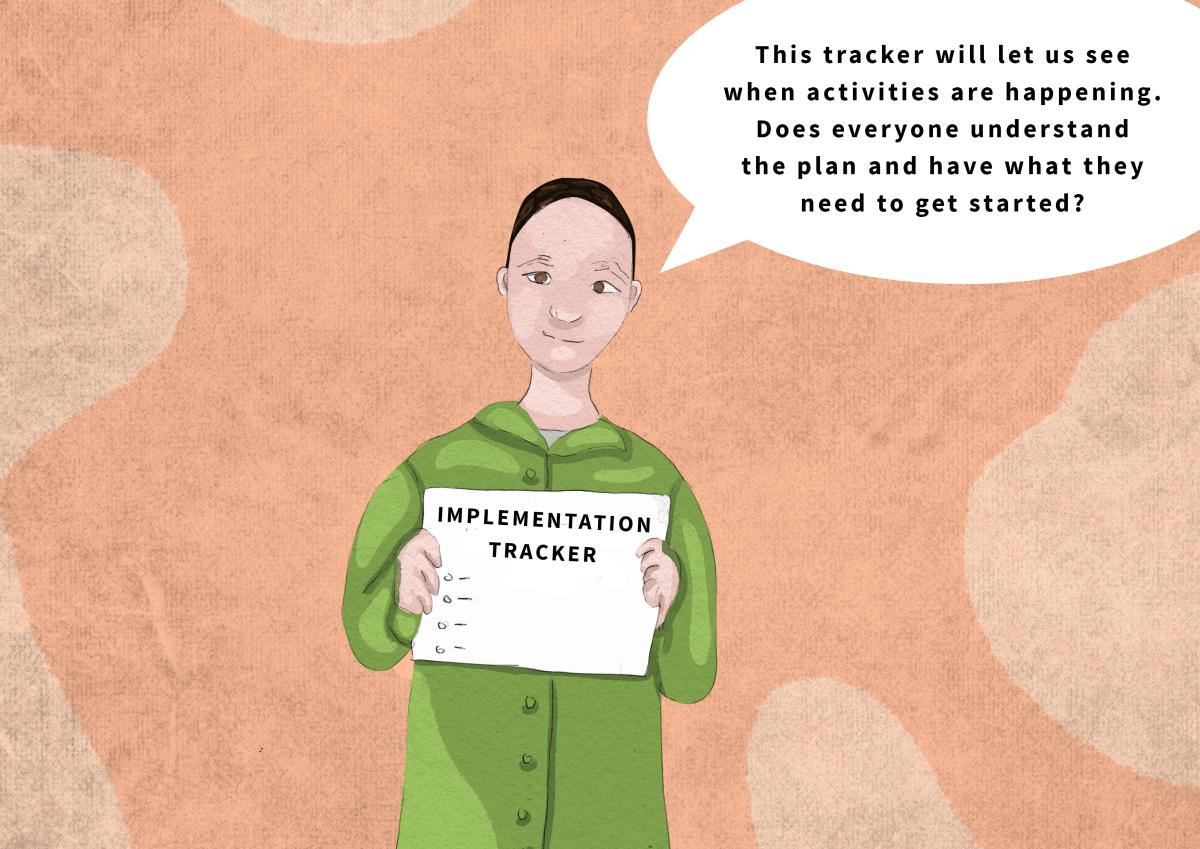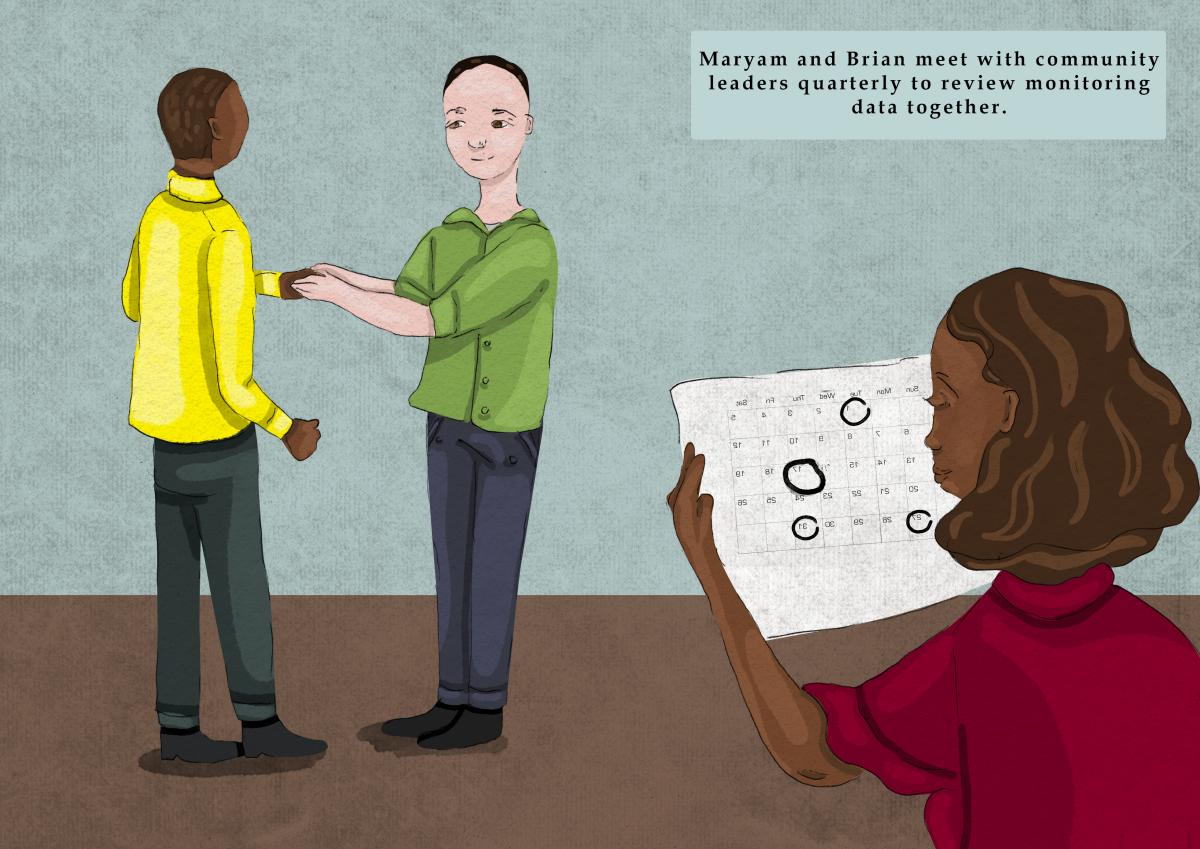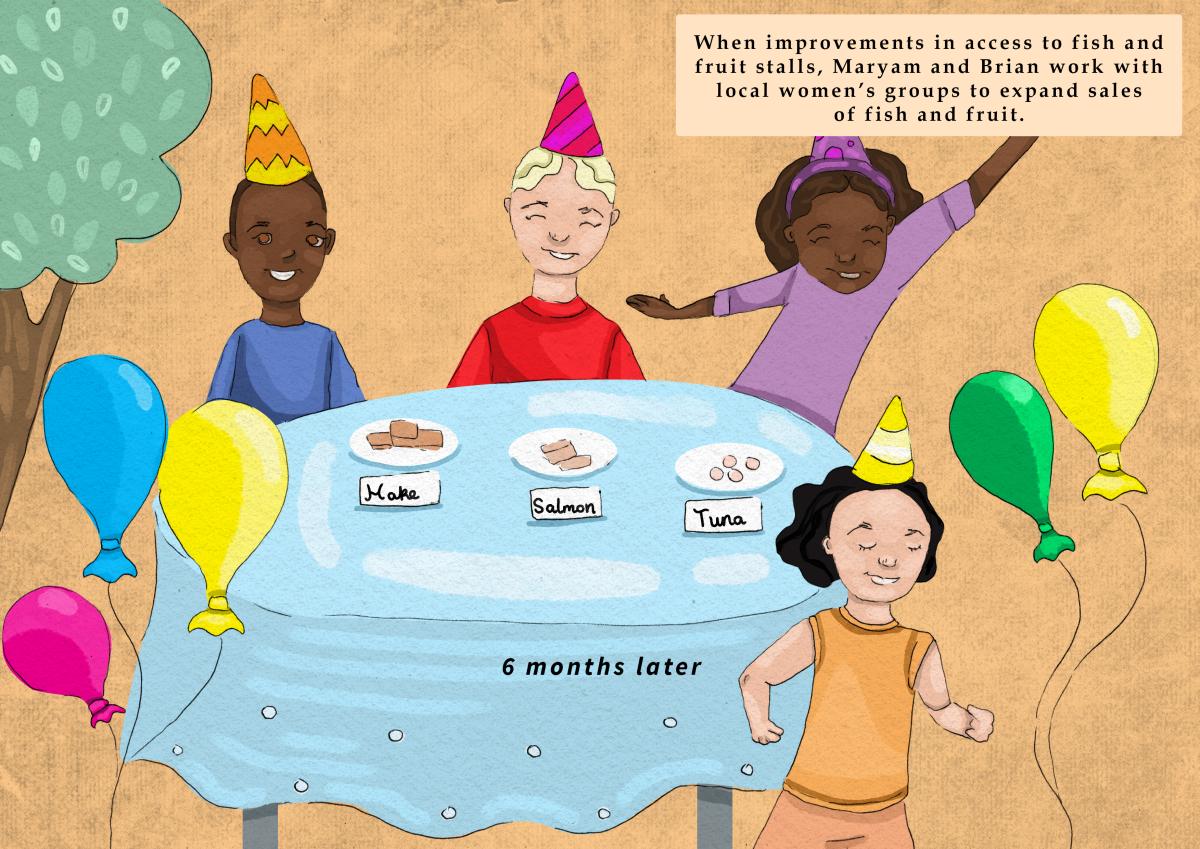Quality implementation and management of SBC for complementary feeding means following the implementation plan. Include a mechanism for ensuring implementation quality, such as an implementation tracker, to help you flag when activities are not happening so that adjustments can be made. Additional tips and pitfalls to avoid during implementation include are highlighted in the SBC Do’s and Don’ts tool.
5.1 Review roles with the implementation team.
Generate commitment by working with the implementing team and key stakeholders to define, understand, and review roles and responsibilities.
5.2 Establish baselines and set targets prior to starting program activities.
Choose baseline indicators based on your linked factor-activity pathways, so they can serve as reference points for the evaluation team in determining the amount of progress or improvement the activities have made later on in the evaluation.
Example Indicator: Percentage of children 6-23 months of age who consumed foods and beverages from at least five out of eight food groups during the previous day (see Annex 1).
5.3 Strengthen capacity of frontline workers and staff to improve complementary feeding.
Orient frontline workers, including CHWs and volunteer cadres, on the SBC strategy. As well-respected community members, change agents such as these can use their in-depth understanding of community values and local culture to lead by example, recognize contextual challenges, and find local solutions to enable behavior change.
5.4 Engage communities as change agents and implementers.
They will help shape activities in ways that make the most sense for the context. Partner with formal leaders, both political and traditional, and informal leaders, and call on members of groups to support collective change. It is also key for communities to discuss and decide how they can engage change agents, including volunteers.
For example, communities provided in-kind support, such as free bus passes, to recognize and motivate community volunteers in Honduras under the Atención Integral a la Niñez initiative. All communities also gave volunteers identification cards, diplomas, carrying bags, letters of recognition , and badges giving them preferential access to care at MOH facilities, Children’s Day piñata parties, and annual family days. These festive family day events for volunteers and their families to celebrate their contributions were especially important in motivating volunteers.
5.5 Monitor implementation.
Monitor changes in behaviors and influential factors using worksheet 5.1 alongside wider program monitoring based on the MEL plan. Discuss the findings from monitoring with SBC and MEL staff to make sure monitoring is happening as planned and that there are no issues with the chosen indicators.
5.6 Learn and adapt.
After analyzing the quantitative and qualitative data, use your MEL plan to identify the trends and regularly review them with implementers and stakeholders, and communities. Adapt activities based on learning from the monitoring data. Analysis of the data and the feedback from participants will tell you what needs to be changed. Changes may be big or incremental.








